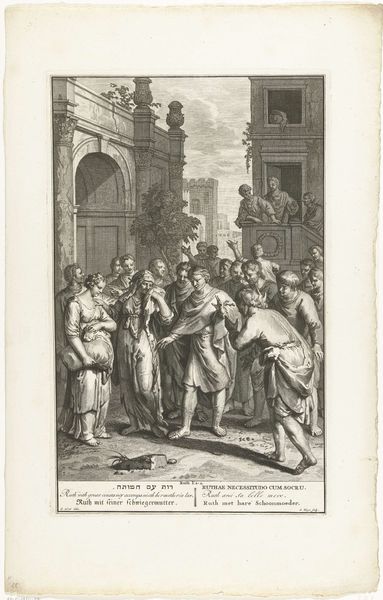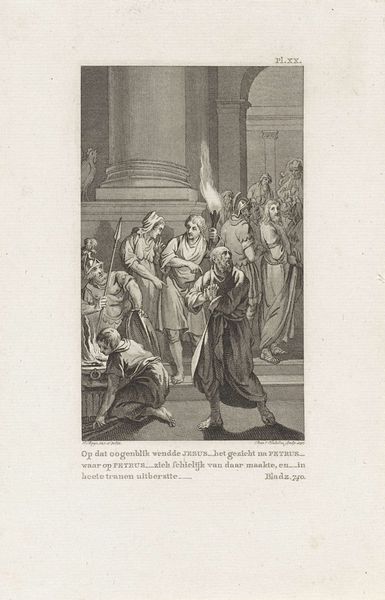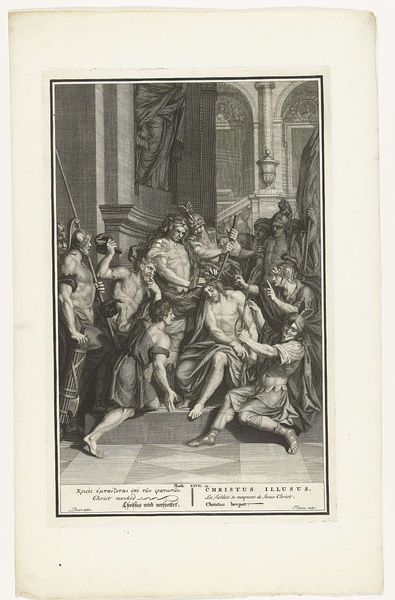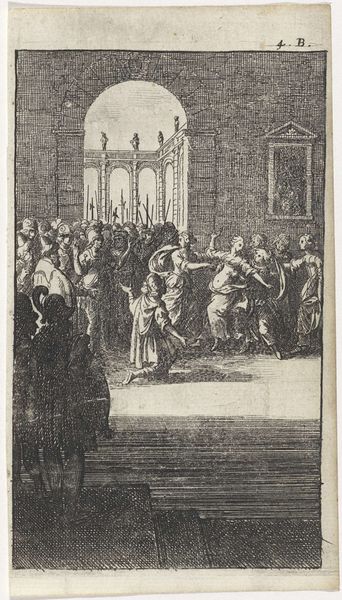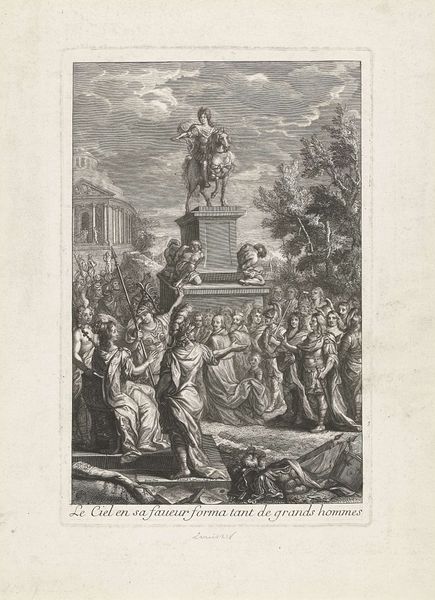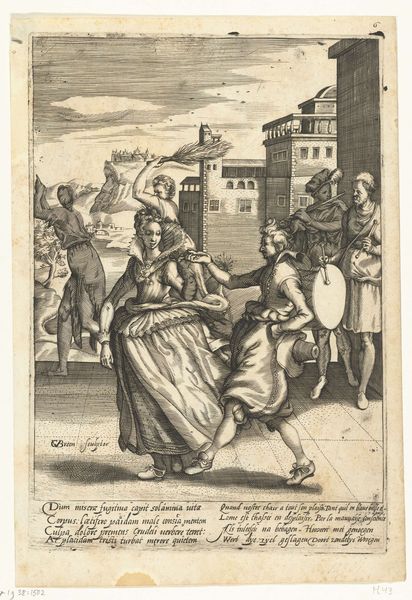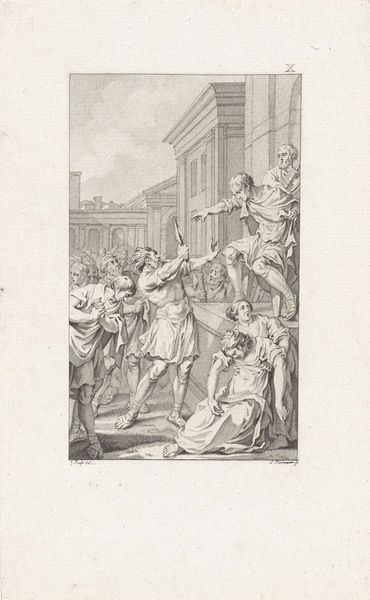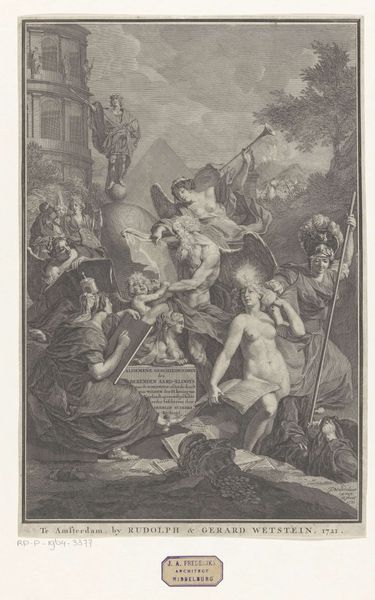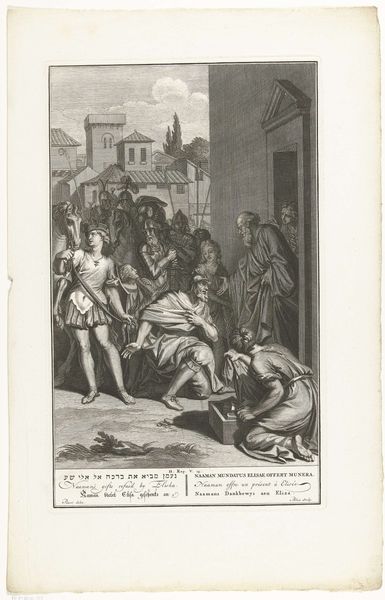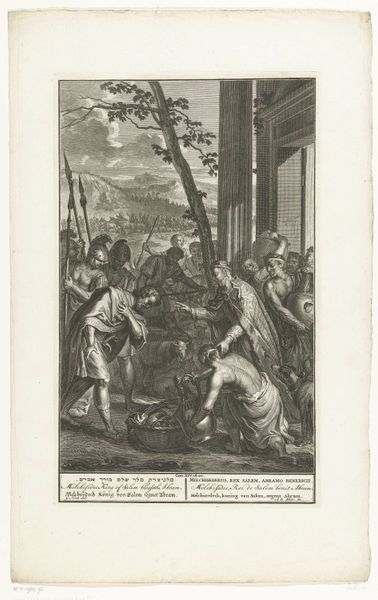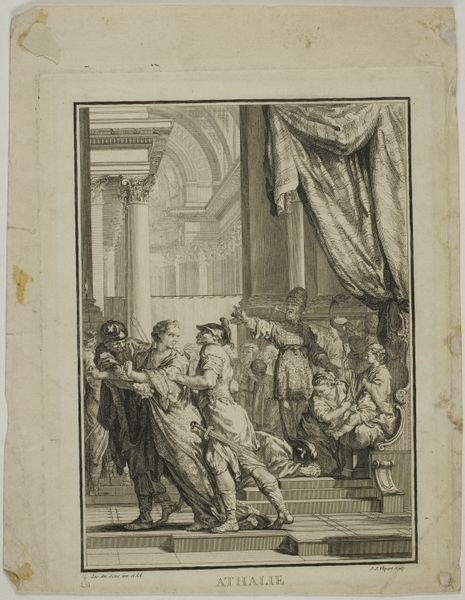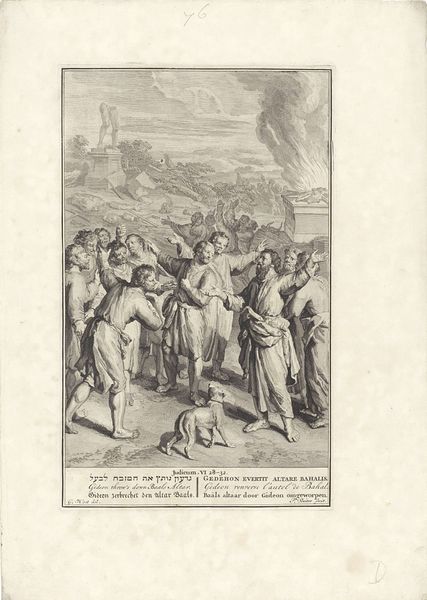
print, engraving
#
baroque
# print
#
old engraving style
#
figuration
#
line
#
genre-painting
#
history-painting
#
engraving
Dimensions: width 224 mm, height 354 mm
Copyright: Rijks Museum: Open Domain
Curator: Welcome to the Rijksmuseum. Here, we have Gilliam van der Gouwen's engraving from 1728, titled "Jephthah Welcomed by his Daughter." It depicts a scene from the Old Testament. Editor: It's a rather somber tableau. The stark contrast in the engraving gives it a dramatic flair, and the way all figures gravitate around that central female figure. What are your thoughts? Curator: The artwork presents a complex narrative around patriarchal bargains and national duty. Jephthah, a judge of Israel, made a vow to sacrifice whatever first came out of his house to greet him if God granted him victory in battle. As fate would have it, it was his daughter. Editor: You immediately understand this deep-seated fear. It’s a scene steeped in the weight of impossible choices. The almost theatrical expressions—the women in shock, Jephthah covering his face, are telling of a symbolic gesture that continues to resonate. It raises questions about power, gender roles, and the implications of one's commitment. Curator: Precisely! The depiction raises ethical questions and exposes gendered expectations placed on women to passively accept their fates for the greater good. Consider how similar themes around female sacrifice permeate literature, culture, and art, revealing deep seated structural issues. Editor: Absolutely. The image carries the symbolism of sacrifice and promise. It’s interesting that even in this formal, almost stylized Baroque setting, the emotional undercurrent feels raw. And look closely – the image is filled with hands! From Jephthah’s covered face to his daughter’s welcoming stance, these hands gesture feelings that give visual insight into hidden aspects of cultural trauma. Curator: A relevant and necessary reading in today's global context, especially in conflicts where nationalist narratives are intertwined with religious zeal. It urges critical examination of the socio-political forces acting upon people's lives, then and now. Editor: An etching, perhaps of an age long past, still capable of cutting to the core of complex historical themes—very evocative, even to contemporary minds.
Comments
No comments
Be the first to comment and join the conversation on the ultimate creative platform.
